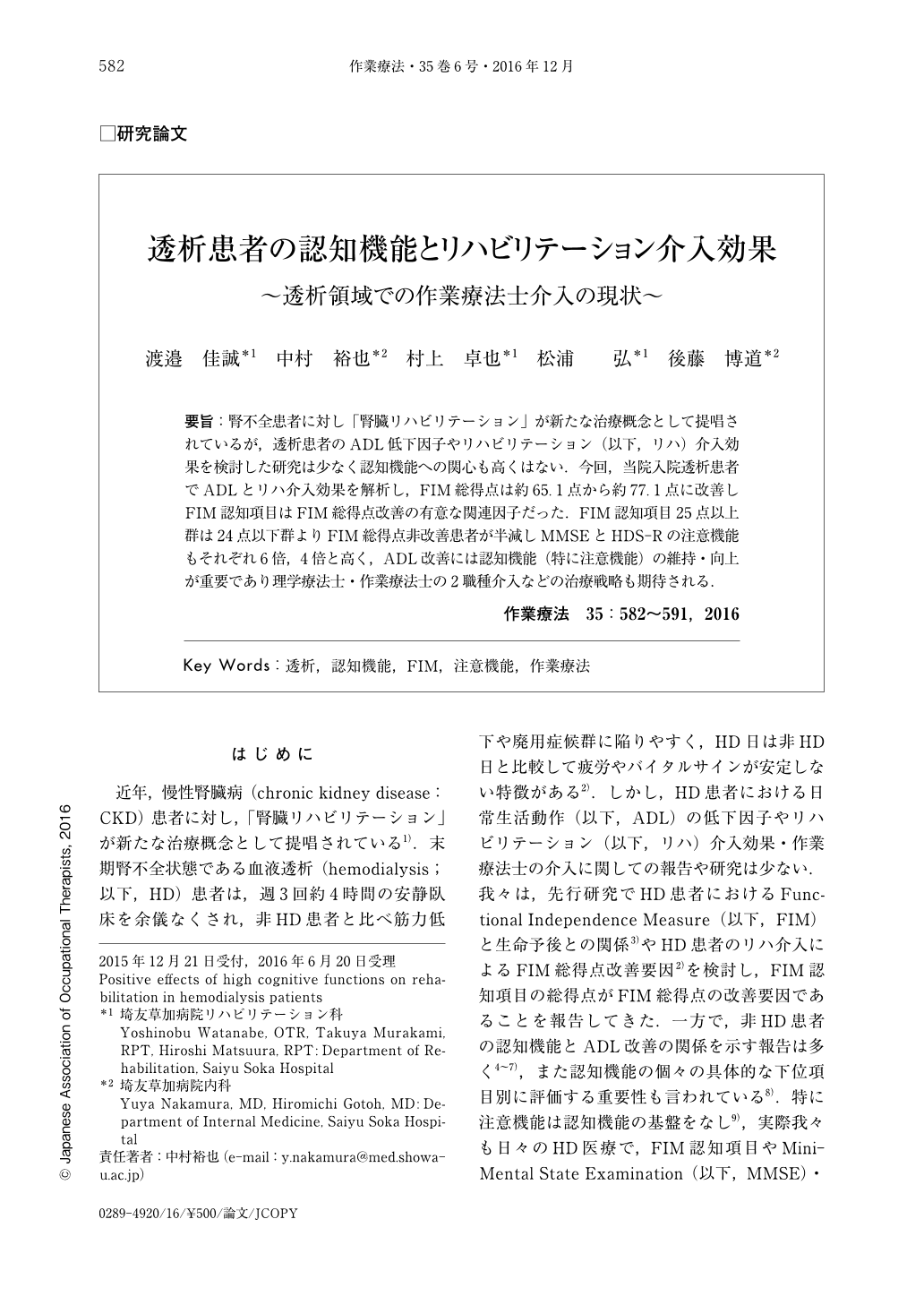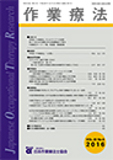Japanese
English
- 販売していません
- Abstract 文献概要
- 1ページ目 Look Inside
- 参考文献 Reference
要旨:腎不全患者に対し「腎臓リハビリテーション」が新たな治療概念として提唱されているが,透析患者のADL低下因子やリハビリテーション(以下,リハ)介入効果を検討した研究は少なく認知機能への関心も高くはない.今回,当院入院透析患者でADLとリハ介入効果を解析し,FIM総得点は約65.1点から約77.1点に改善しFIM認知項目はFIM総得点改善の有意な関連因子だった.FIM認知項目25点以上群は24点以下群よりFIM総得点非改善患者が半減しMMSEとHDS-Rの注意機能もそれぞれ6倍,4倍と高く,ADL改善には認知機能(特に注意機能)の維持・向上が重要であり理学療法士・作業療法士の2職種介入などの治療戦略も期待される.
Renal rehabilitation is a recently proposed rehabilitation treatment concept, which is not yet fully established. Very few studies have investigated the effects of rehabilitation on activities of daily living (ADL) in hemodialysis patients. Evidence regarding its effects on cognitive function is also limited. In this study, we investigated the effects of rehabilitation on ADL levels in 182 hemodialysis patients. We assessed the levels of ADL using the functional independence measure (FIM), which is one of the major surrogate markers for ADL. Moreover, we investigated cognitive functions in detail using the MMSE (Mini-Mental State Examination) and the HDS-R (Hasegawa Dementia Scale-revised). Physical therapists (PTs) and occupational therapists (OTs) designed rehabilitation programs as per the patients' daily lifestyles. After rehabilitation, the average total FIM score increased from 65.1 to 77.1. The FIM cognitive item was significantly associated with rehabilitation effects. Among patients whose FIM scores did not increase, the number of patients with FIM cognitive scores 25 was half that of the patients with FIM cognitive scores 24. Moreover, the attention functions of MMSE and HDS-R in patients with FIM cognitive scores 25 were 6 and 4 times higher, respectively, than those in patients with FIM cognitive scores 24. The effectiveness of rehabilitation depends on maintaining improved FIM cognitive scores (particularly in the attention function). Our findings suggest the need for comprehensive strategies such as simultaneous intervention by PTs and OTs, which could increase the level of ADL in hemodialysis patients.

Copyright © 2016, Japanese Association of Occupational Therapists. All rights reserved.


